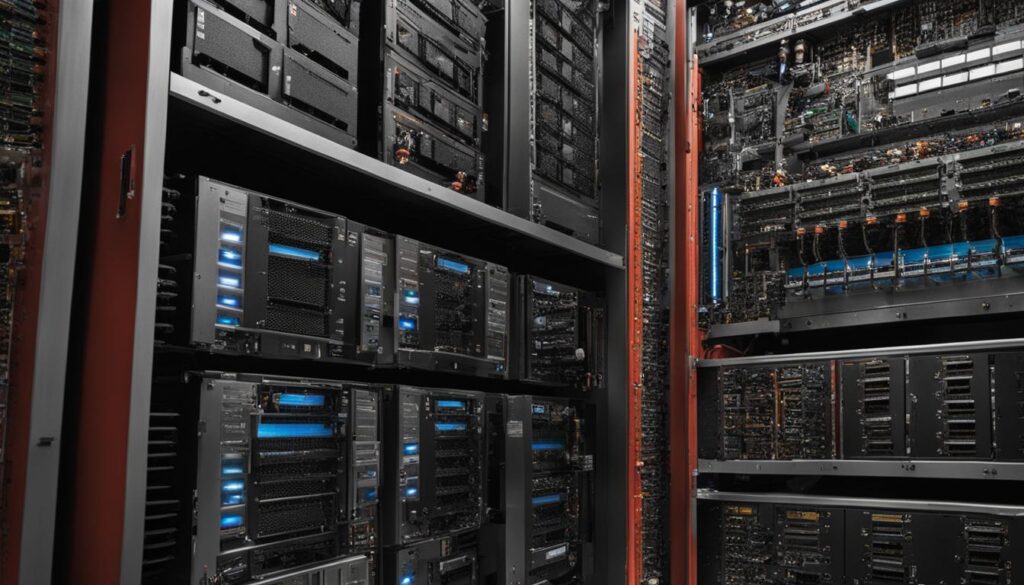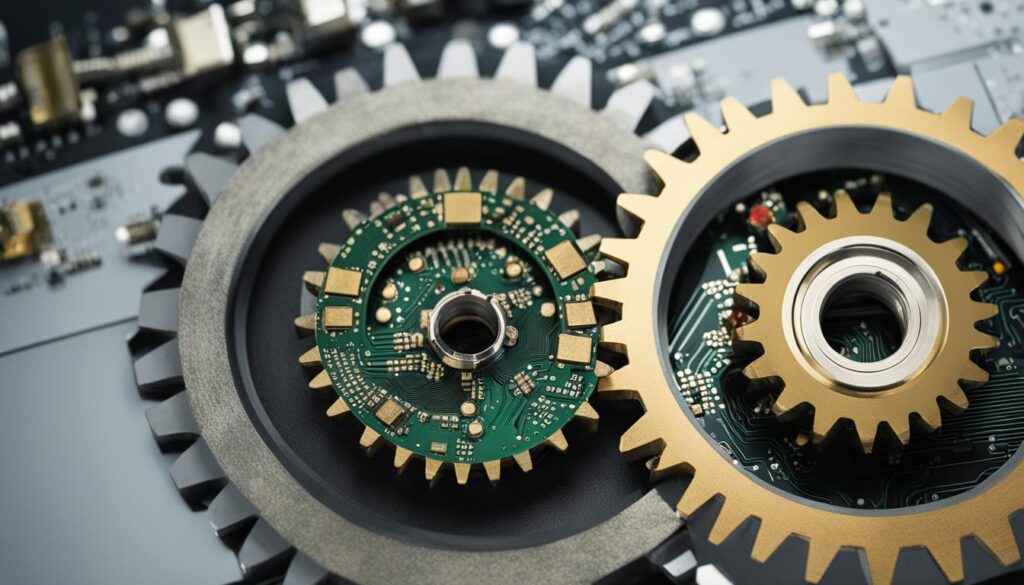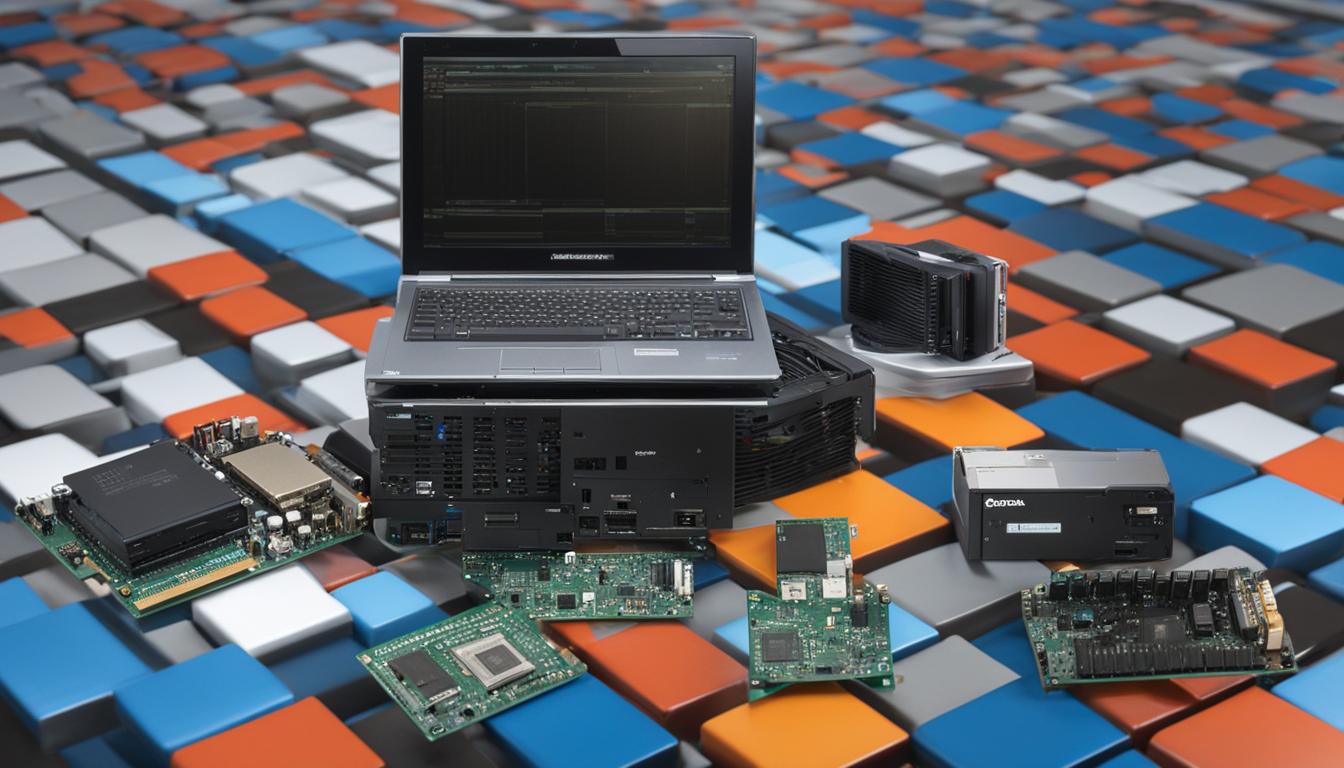In the world of information technology (IT), there is often confusion about whether IT is hardware or software. It’s important to understand that IT encompasses both hardware and software components. When we talk about IT, we’re referring to the use of computers, storage devices, networks, and other physical devices to create, process, store, secure, and exchange electronic data. So, the answer to the question is: IT is both hardware and software.
Hardware is the physical aspect of IT. It includes devices like computers, servers, printers, and scanners. These devices are the foundation of the IT infrastructure, providing the platform for software to run on. Without hardware, software would have no means to execute its functions.
On the other hand, software refers to the programs and applications that run on the hardware devices. It includes operating systems, office productivity software, databases, and specialized applications designed for various industries. Software allows users to interact with hardware and perform specific tasks and functions.
Both hardware and software are equally important in the world of IT. Hardware provides the necessary infrastructure for software to function, while software enables the efficient use and management of hardware. Together, they form a symbiotic relationship that powers the world of information technology.
Contents
Key Takeaways:
- Information technology (IT) encompasses both hardware and software components.
- Hardware includes devices like computers, servers, printers, and scanners, while software refers to the applications and programs that run on these devices.
- Both hardware and software are essential for IT to function effectively and support business operations.
- Hardware provides the physical infrastructure, while software provides the programs that utilize and interact with the hardware.
- The integration of hardware and software allows businesses to leverage technology for various purposes and enhance overall business performance.
The Role of Hardware in Information Technology
When it comes to information technology (IT), hardware plays a critical role in ensuring smooth operations and efficient functionality. IT hardware encompasses the physical devices used in IT systems. These devices include computers, servers, routers, switches, printers, and more, all of which are necessary for the proper functioning of the IT infrastructure.
Hardware components are responsible for processing data, storing information, and facilitating communication between different devices. For example, computers serve as the primary tool for users to access software and perform various tasks. Servers handle the storage and management of vast amounts of data, ensuring it is accessible and secure. Routers and switches enable the communication between different devices within a network, enabling data transfer and connectivity.
Without hardware, software would have no platform to run on, making hardware a crucial component of information technology. It provides the necessary foundation for software applications and programs to execute their functions effectively. The integration of hardware and software enables businesses to leverage technology to streamline operations, enhance productivity, and achieve their goals.
In summary, hardware plays a vital role in information technology, providing the physical infrastructure necessary for the functioning of IT systems. Understanding the importance of both hardware and software is crucial for businesses to effectively leverage technology and drive success in today’s digital world.
Benefits of IT Hardware:
- Enables data processing, storage, and retrieval
- Facilitates communication and connectivity between devices
- Provides a platform for software applications to run on
- Supports efficient and effective business operations
Key Takeaways:
IT hardware encompasses the physical devices used in information technology systems.
Hardware is responsible for processing data, storing information, and facilitating communication between devices.
Without hardware, software would have no platform to run on, making hardware a crucial component of IT.
Understanding the role and importance of hardware is essential in leveraging technology effectively.
The Role of Software in Information Technology
In information technology, software plays a vital role in enabling hardware to perform specific tasks and functions. It encompasses a wide range of programs and applications that facilitate user interaction with the hardware. Whether it’s operating systems, office productivity software, databases, or industry-specific applications, software is essential for businesses to streamline their operations, automate tasks, and enhance productivity.
Software enables data processing, storage, and analysis, allowing businesses to make informed decisions and gain valuable insights. It provides a platform for creating and managing digital content, collaborating with team members, and communicating with customers. By harnessing the power of software, organizations can optimize their workflows, improve efficiency, and deliver high-quality products and services.
“Software is the invisible force that brings hardware to life and empowers businesses to achieve their goals.”
One of the key advantages of IT hardware and software integration is the ability to centralize and automate various business processes. For example, enterprise resource planning (ERP) software integrates different departments and functions, such as finance, sales, inventory management, and human resources. This integration enables real-time data sharing, improves decision-making, and eliminates manual, time-consuming tasks.
Moreover, software allows businesses to adapt and evolve in a rapidly changing digital landscape. With cloud computing and software-as-a-service (SaaS) solutions, organizations can access powerful tools and applications without the need for extensive on-premises infrastructure. This scalability and flexibility enable businesses to respond quickly to market demands, scale their operations, and stay ahead of the competition.
In summary, software plays an integral role in information technology, serving as the bridge between hardware and business functions. It empowers organizations with the tools and capabilities to optimize processes, improve productivity, and drive innovation. By leveraging the advantages of IT hardware and software integration, businesses can unlock their full potential and achieve sustainable growth in today’s digital-driven world.
Advantages of IT Hardware and Software Integration
The integration of IT hardware and software offers numerous benefits for businesses:
- Streamlined operations and improved efficiency
- Enhanced data processing, storage, and analysis capabilities
- Automation of manual tasks, reducing human error
- Improved collaboration and communication within and outside the organization
- Access to advanced applications and functionalities
- Scalability and flexibility to adapt to changing business needs
- Cost savings through centralization and optimization of resources
Key Advantages of IT Hardware and Software Integration
| Advantage | Description |
|---|---|
| Streamlined Operations | Integration eliminates silos and improves communication and collaboration between departments. |
| Enhanced Data Processing | Software enables efficient data collection, analysis, and storage. |
| Automation | Tasks can be automated, reducing the reliance on manual processes and minimizing errors. |
| Improved Collaboration | Software tools facilitate collaboration between team members and external stakeholders. |
| Access to Advanced Applications | Integration enables the use of specialized software applications tailored to specific business needs. |
| Scalability and Flexibility | Businesses can easily scale their IT infrastructure and adapt to changing requirements. |
| Cost Savings | Centralization and optimization of resources result in cost savings and efficient resource utilization. |
With the seamless integration of IT hardware and software, businesses can unlock their full potential, drive innovation, and stay competitive in the digital age.

The Integration of Hardware and Software in Information Technology
In information technology, the integration of hardware and software is essential for creating a complete and functional system. Hardware provides the physical infrastructure, while software encompasses the programs and applications that utilize and interact with the hardware. This harmonious integration enables businesses to leverage technology for various purposes, such as data management, communication, and automation.
The integration of hardware and software in IT systems offers several advantages for businesses:
- Enhanced Efficiency: The seamless integration of hardware and software streamlines business operations, allowing for efficient processing, storage, and retrieval of data. This results in increased productivity and optimized workflows.
- Improved Communication: The integration of communication software, such as email clients and video conferencing applications, with hardware devices enables smooth and effective communication within and outside the organization.
- Data Management and Analysis: Hardware components, such as servers and storage devices, work in tandem with software applications designed for data management and analysis. This integration allows businesses to collect, store, analyze, and derive valuable insights from their data.
- Automation and Streamlining: The combination of hardware and software facilitates the automation of repetitive tasks, reducing the reliance on manual labor and freeing up resources for more strategic initiatives. This leads to increased efficiency and cost savings.
The integration of hardware and software in information technology is vital for businesses to stay competitive in today’s digital landscape. The synergy between these components enables the successful implementation of IT solutions, enhancing overall business performance.
To illustrate the integration of hardware and software, consider the example of a retail store:
“By integrating point-of-sale (POS) hardware, such as barcode scanners and cash registers, with retail software, such as inventory management systems and customer relationship management (CRM) tools, the retail store can efficiently track inventory, process sales, and analyze customer data. This integration simplifies operations, optimizes sales processes, and improves customer satisfaction.”

The image above visually represents the integration of hardware and software in information technology, showcasing the interconnectedness and interdependence between the two components.
Conclusion
In conclusion, information technology is a combination of both hardware and software components. Hardware refers to the physical devices such as computers, servers, and printers that are used in IT systems, while software comprises the applications and programs that run on these devices. Both hardware and software play crucial roles in the functioning of information technology, and understanding their integration is vital for businesses to leverage technology effectively.
IT hardware and software work together seamlessly to create a complete system that enables data processing, storage, communication, and automation. Without hardware, software would have no platform to run on, and without software, hardware would be limited in its capabilities. The interaction between hardware and software allows businesses to streamline their operations, enhance productivity, and achieve their goals in the digital age.
By comprehending the differences and interconnectivity between IT hardware and software, organizations can make informed decisions when implementing technology solutions. They can optimize their IT infrastructure, select the right software applications for their needs, and ensure the compatibility and reliability of their hardware and software components. With a deep understanding of IT hardware and software, businesses can embrace technology advancements and stay competitive in today’s ever-evolving digital landscape.
FAQ
Is information technology hardware or software?
Information technology encompasses both hardware and software components. Hardware refers to the physical devices used in IT systems, while software includes the programs and applications that run on these devices.
What is the difference between IT hardware and software?
IT hardware includes the physical devices used in information technology systems, such as computers, servers, routers, switches, printers, and more. On the other hand, software refers to the set of programs and applications that enable hardware to perform specific tasks and functions.
What is the role of hardware in information technology?
Hardware components are responsible for processing data, storing information, and facilitating communication between different devices. Without hardware, software would have no platform to run on, making hardware a crucial component of information technology.
What is the role of software in information technology?
Software plays a vital role in information technology as it allows users to interact with hardware and perform specific functions. It enables data processing, storage, and analysis and is essential for businesses to streamline their operations, automate tasks, and enhance productivity.
How do hardware and software integrate in information technology?
Hardware provides the physical infrastructure, while software provides the programs that utilize and interact with the hardware. The integration of hardware and software allows businesses to leverage technology for various purposes, such as data management, communication, and automation.




